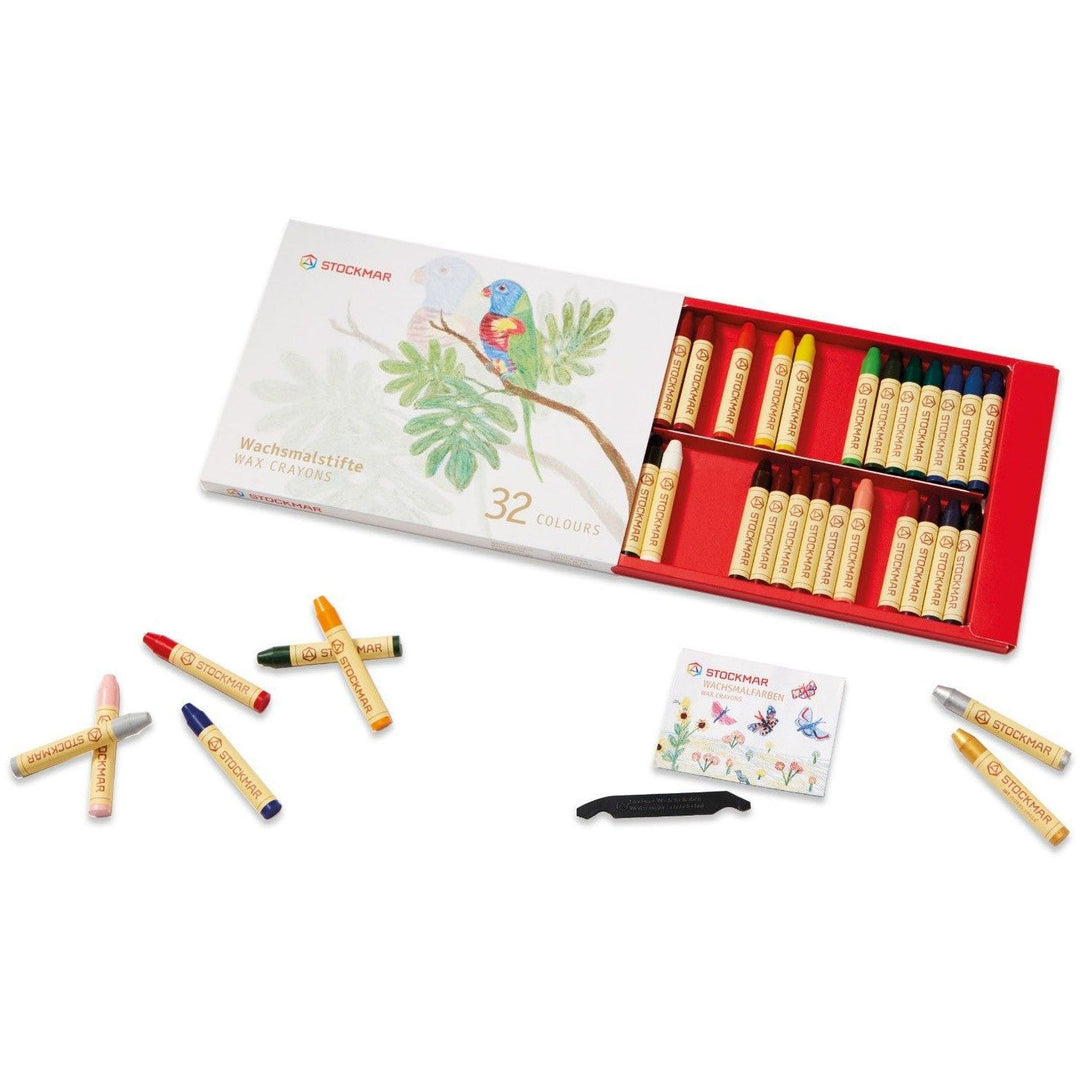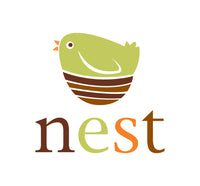
Stockmar wax stick crayons 32 colours in a gift box
- Ships from Ottawa, Canada
- Ships within 72 hours
Stockmar wax crayons boast unsurpassed colouring qualities. The 32 vibrant colours are simultaneously strong and translucent, allowing us to experience colour in a new way. Furthermore, their pleasant beeswax fragrance will serve to further stimulate the senses. Stockmar crayons are continually subjected to testing to ensure their quality and health safety.
32 block set colours includes:
01 carmine red ¦ 02 vermilion ¦ 03 orange ¦ 04 golden yellow ¦ 05 lemon yellow ¦ 06 yellow green ¦ 07 green ¦ 08 blue green ¦ 09 blue ¦ 10 ultramarine ¦ 11 blue violet ¦ 12 red violet ¦ 13 rust ¦ 14 yellow brown ¦ 15 black ¦ 16 white ¦ 17 grey ¦ 18 prussian blue ¦ 19 cobalt blue ¦ 20 yellow ochre ¦ 21 venetian red ¦ 22 umber ¦ 23 olive green ¦ 24 pink ¦ 25 gold ¦ 26 silver ¦ 34 pearl pink ¦ 42 magenta ¦ 43 flame red ¦ 44 mid yellow ¦ 45 leaf green ¦ indigo
Individual crayon sticks are with diameter of 12mm (0.47"), and 83 mm (3.26") long.
Made in Germany.
~~~~~~~~~~~~~~~~~~~
Why Stockmar Wax Crayons contain 10% beeswax – no more and no less:
Primarily paraffin and beeswax. Traditionally, Stockmar wax crayons contain 10% natural beeswax, which provides the right degree of transparency and gives off a pleasant beeswax scent. In addition, the essential oils in beeswax have a preserving effect, enabling us to completely abstain from using preservatives in our wax crayons. A proportion of beeswax in wax crayons that is appreciably higher than 10% would have a negative impact on colouring quality. Too little colour would be produced and the actual colour of the beeswax would distort the colour shades. As a consequence, the use of a higher proportion is not necessary.
Beeswax has advertising appeal: it’s natural, ‘renewable’, smells good and everyone admires and loves bees. Beeswax – what kind of substance is it exactly? It is a precious and limited natural product. In the interests of bees, whose numbers are under threat worldwide, any use of beeswax should be acutely conscious, measured and responsible. Any beekeeping geared towards increasing beeswax production would not constitute natural beekeeping and would have ominous consequences from an ecological perspective.
Why use more beeswax in our crayons if it wouldn’t enhance the product quality and would only unnecessarily consume a precious natural product? That is precisely why Stockmar consciously uses 10% beeswax for its wax crayons.
Stockmar has partnered with www.mellifera.deVisit this site for more information on beeswax and bees.
Why Stockmar uses paraffin (microcrystalline wax) in its wax crayons:
Paraffin is broadly used due to its non-toxicity and water insolubility. It is often contained in ointments, skin creams and lip balms, and is even a principle component in many skin protection creams for small children. Paraffin is also used in foodstuffs (sweets, chewing gum, wax coatings for cheese) and in medical applications (as an antidote for poison and as a laxative). The possibility of deposition in the human body only exists in the case of constant intake of the substance. A constant intake is highly unlikely in the case of wax crayons.
According to expert opinion, however, the detrimental effect to health in the case of paraffin does not stem from any potential deposition, but through heating to high temperatures as this could release carcinogenic substances. Accordingly, hazards to health relate to people whose work, for example, involves heating paraffin for long periods and who breathe in the resulting vapours; which naturally does not apply to consumers of cosmetics, medication and wax crayons.
For Stockmar wax crayons, they use paraffin (microcrystalline waxes) with a high melting point, that is they first melt at a temperature of around 70 °C (158 °F). Can this happen with children’s wax crayons or even wax crayons that have been swallowed by kids? 70 °C?No. The paraffin in Stockmar wax crayons have an extremely positive impact on colouring quality.In contrast to chalky fillers, they don’t dull the colours, but rather maintain the transparency and colour intensity.Paraffin is produced as a by-product in oil refineries and, as a crude oil product, is naturally not a renewable resource.Nevertheless, we currently have no viable alternative to paraffin that would be resource conserving and ecologically friendly and at the same time maintain the colouring quality of the product to the extent of the high melting paraffin we use.
Stockmar wax colours: product features and quality:
Other frequently used resources that are eagerly touted as renewable, such as soy and palm oil, do not produce the same product quality and in our opinion are not ecologically friendly. As a result of the increase in global demand, they lead to the creation of monocultures, in turn prompting the clearing of rainforests and disappearance of areas used for agriculture, with all the resulting negative ecological and social consequences.

